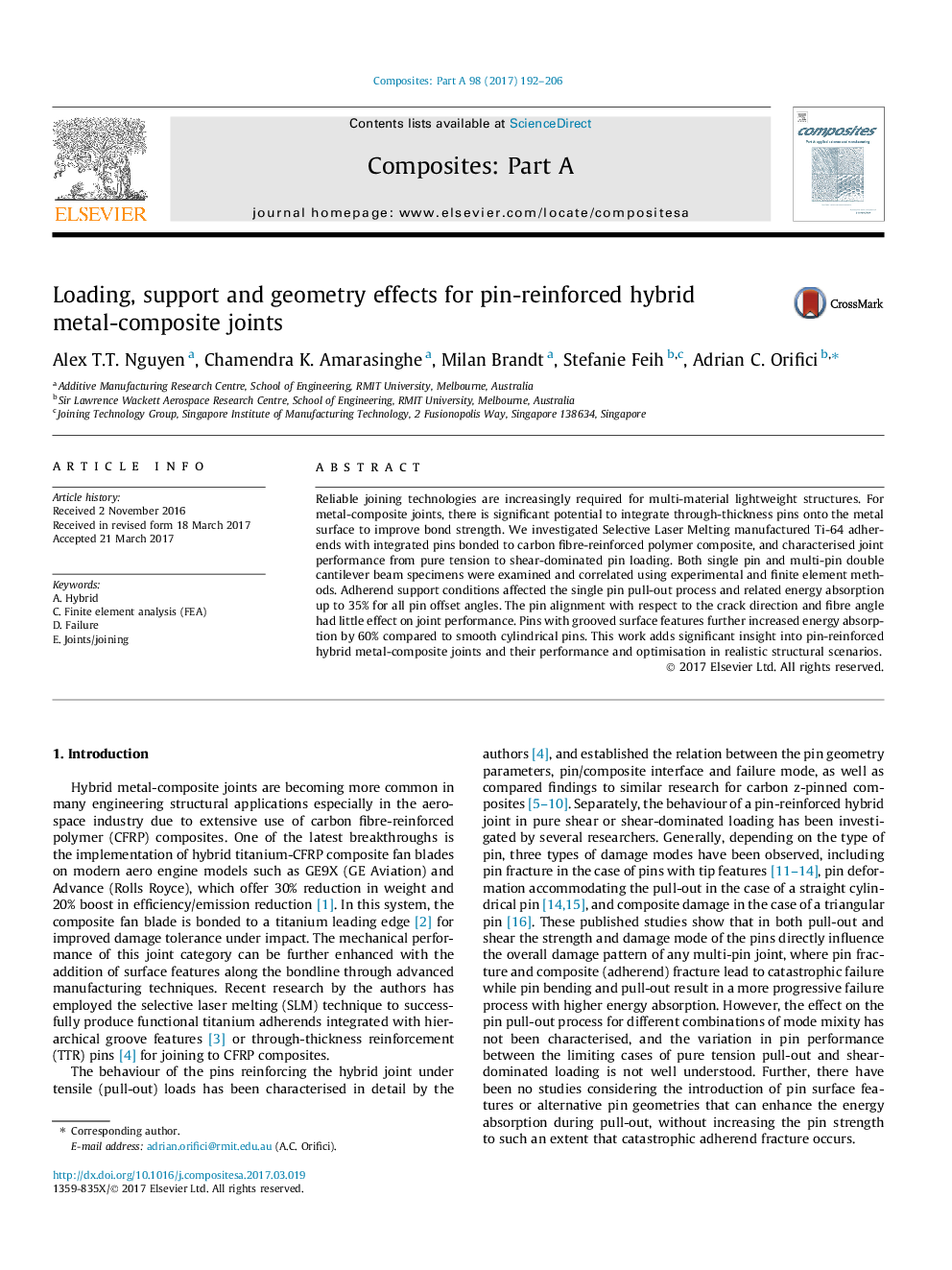| Article ID | Journal | Published Year | Pages | File Type |
|---|---|---|---|---|
| 5439545 | Composites Part A: Applied Science and Manufacturing | 2017 | 15 Pages |
Abstract
Reliable joining technologies are increasingly required for multi-material lightweight structures. For metal-composite joints, there is significant potential to integrate through-thickness pins onto the metal surface to improve bond strength. We investigated Selective Laser Melting manufactured Ti-64 adherends with integrated pins bonded to carbon fibre-reinforced polymer composite, and characterised joint performance from pure tension to shear-dominated pin loading. Both single pin and multi-pin double cantilever beam specimens were examined and correlated using experimental and finite element methods. Adherend support conditions affected the single pin pull-out process and related energy absorption up to 35% for all pin offset angles. The pin alignment with respect to the crack direction and fibre angle had little effect on joint performance. Pins with grooved surface features further increased energy absorption by 60% compared to smooth cylindrical pins. This work adds significant insight into pin-reinforced hybrid metal-composite joints and their performance and optimisation in realistic structural scenarios.
Related Topics
Physical Sciences and Engineering
Materials Science
Ceramics and Composites
Authors
Alex T.T. Nguyen, Chamendra K. Amarasinghe, Milan Brandt, Stefanie Feih, Adrian C. Orifici,
